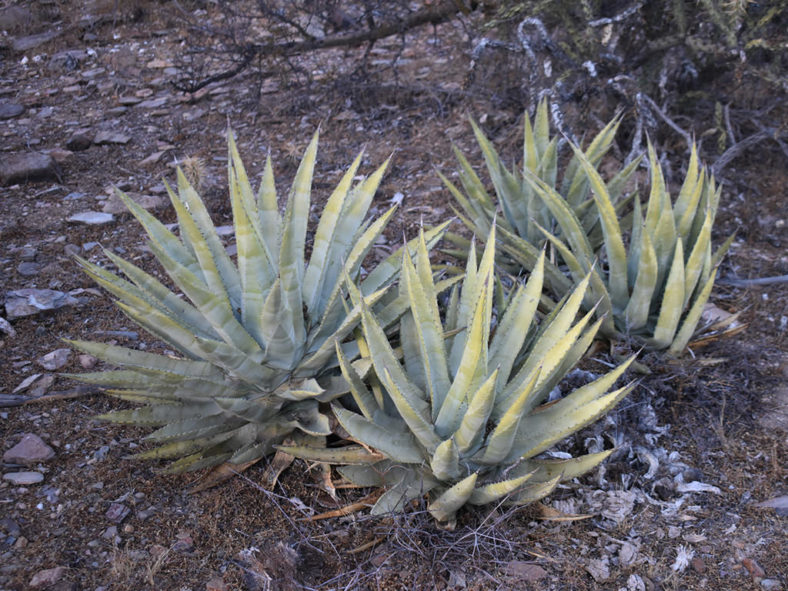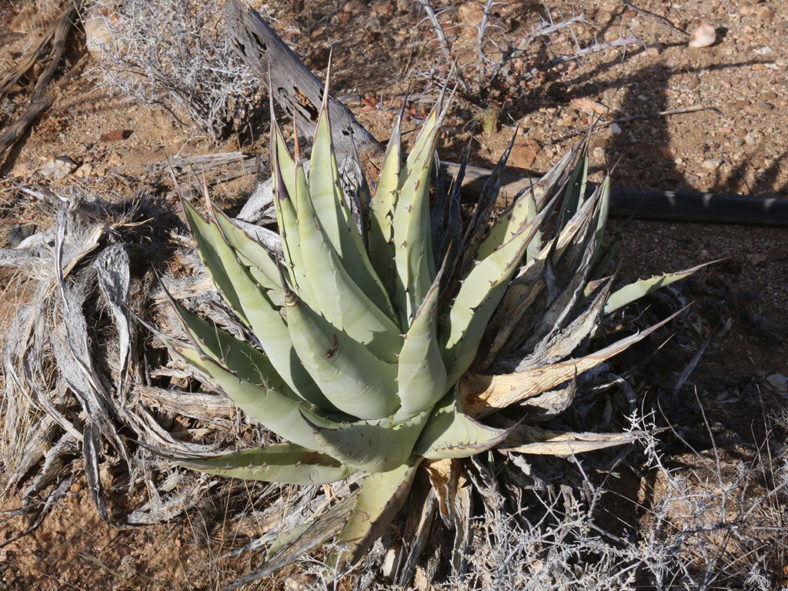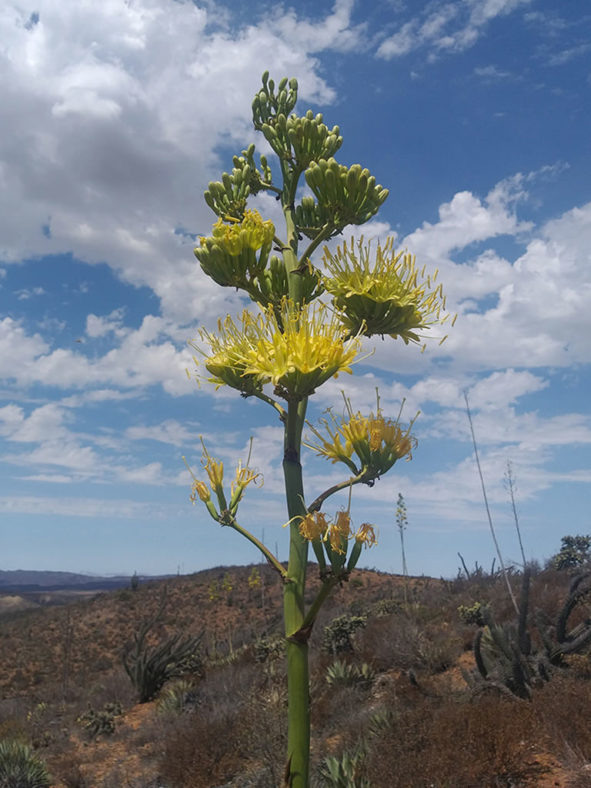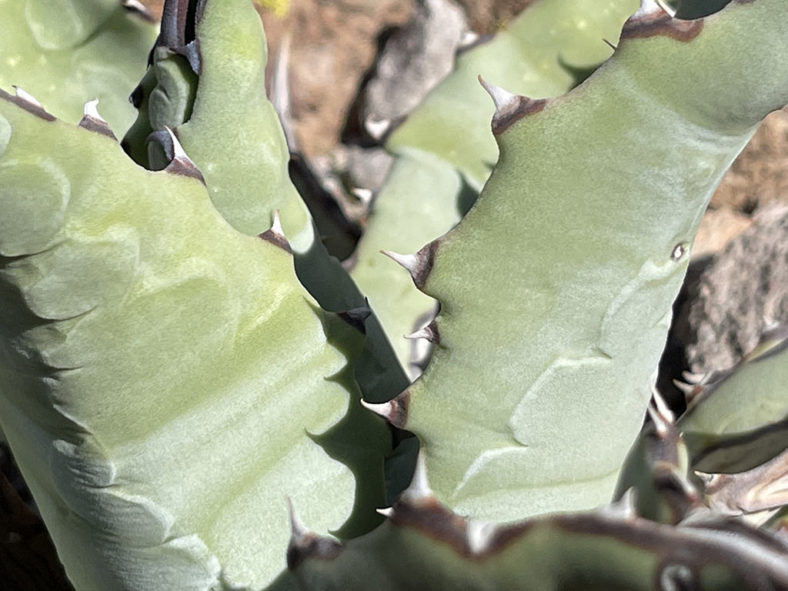Scientific Name
Agave cerulata Trel.
Synonym(s)
Agave cerulata subsp. cerulata
Scientific Classification
Family: Asparagaceae
Subfamily: Agavoideae
Genus: Agave
Etymology
The specific epithet "cerulata (ker-yoo-LAY-tuh)" is the feminine form of the Latin adjective "cerulatus," meaning "waxen, waxy," and probably refers to the waxy white buds.
Origin
The native range of Agave cerulata is through northern and central Baja California in Mexico. It grows on dry hills, plains, and rocky slopes.
Description
Agave cerulata is a succulent plant that forms rosettes of lance-shaped leaves with sharp, irregularly spaced marginal teeth and a needle-like terminal spine. The rosettes can grow up to 20 inches (50 cm) tall and 3 feet (90 cm) in diameter, abundantly producing offsets. The leaves vary from yellow, yellowish-green, and light green to blue-green or gray-green. They can measure up to 20 inches (50 cm) long and up to 2.8 inches (7 cm) wide. The marginal teeth are grayish-brown with a brown ring at the base and can reach up to 0.2 inches (0.5 cm) in length, while the terminal spine is light gray to dark gray and can reach up to 2.4 inches (6 cm) in length.
The mature rosettes produce a branched inflorescence with umbel-shaped clusters of flowers on lateral branches, usually in spring. The inflorescence can grow up to 13.1 feet (4 m) tall. The flowers are waxy white in bud, opening into pale yellow, and can reach up to 2.4 inches (6 cm) in length, with a fusiform ovary about 1.3 inches (3.2 cm) long.

How to Grow and Care for Agave cerulata
Light: Like all Agaves, this plant requires full sun to partial shade. If growing A. cerulata indoors, choose a bright, sunny window with as much sun as possible. From spring to fall, it loves going outside.
Soil: A. cerulata will tolerate most soils as long as they have good drainage but prefer sandy or rocky soil.
Temperature: During the growing season, it likes warm temperatures, while in winter, when resting, this succulent enjoys cooler temperatures. A. cerulata can withstand temperatures as low as 10 °F (-12.2 °C). USDA Plant Hardiness Zones 8a to 10b, 10 to 40 °F (-12.2 to 4.4 °C).
Watering: From spring to fall, water thoroughly when the soil becomes dry. In winter, water sparingly about once a month. Plants in containers require more frequent watering than those in the ground.
Fertilizing: Give your A. cerulata a small amount of fertilizer in the spring during the first two years. After that, established plants seem to take care of themselves.
Repotting: If you notice your A. cerulata becoming pot-bound, repot it with fresh soil in a pot slightly larger than the old one. Give the plant a week or so to readjust before you water it again.
Propagation: Since it can take years to produce seeds, A. cerulata is usually propagated by offsets. The best time to remove the offsets is in spring and summer. Sow the seeds in spring.
Learn more at How to Grow and Care for Agave.
Toxicity of Agave cerulata
A. cerulata is not toxic to humans but may be mildly poisonous to children and pets.
Links
- Back to genus Agave
- Succupedia: Browse succulents by Scientific Name, Common Name, Genus, Family, USDA Hardiness Zone, Origin, or cacti by Genus
Photo Gallery
Click on a photo to see a larger version.


